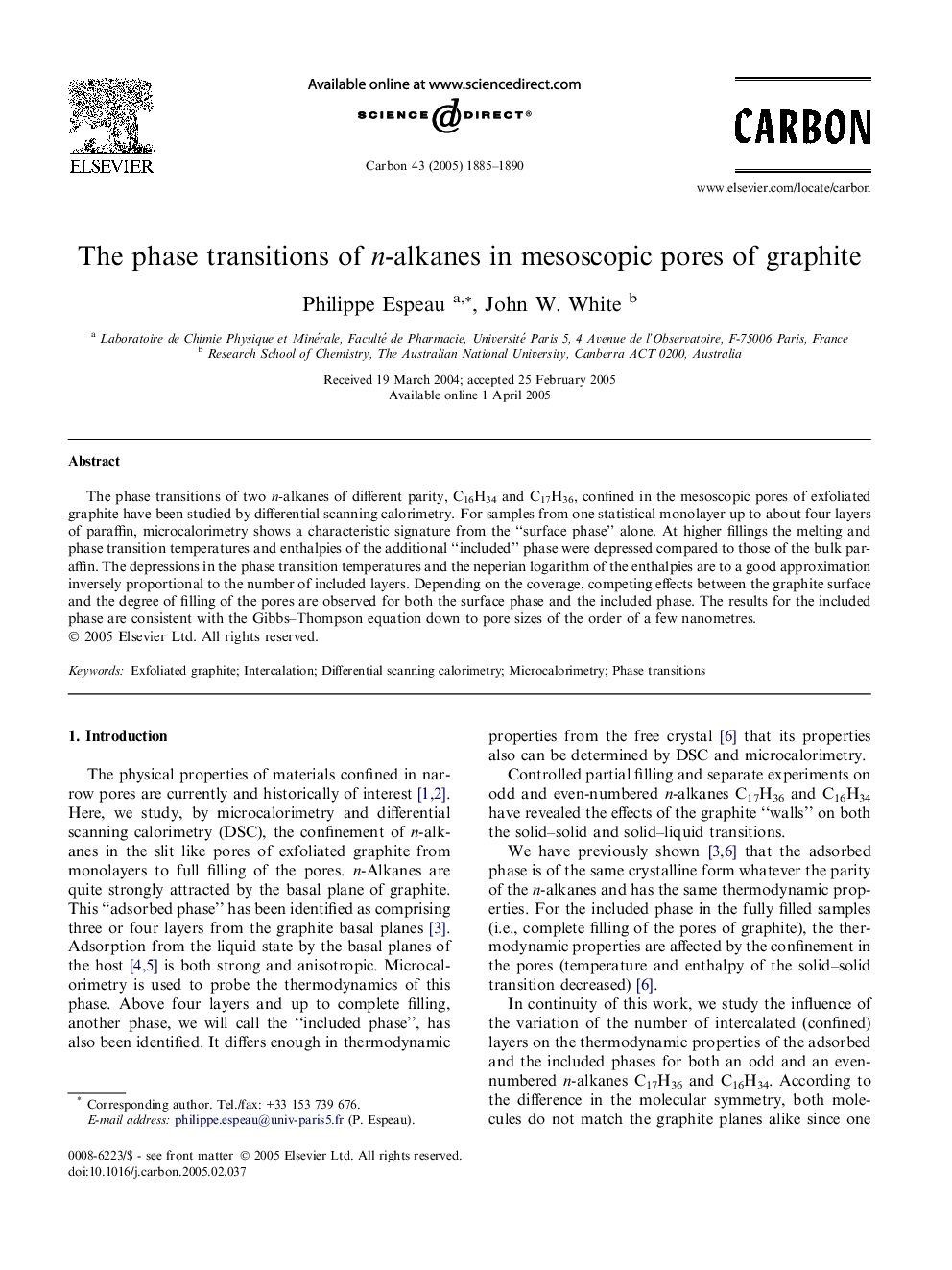| Article ID | Journal | Published Year | Pages | File Type |
|---|---|---|---|---|
| 1420135 | Carbon | 2005 | 6 Pages |
Abstract
The phase transitions of two n-alkanes of different parity, C16H34 and C17H36, confined in the mesoscopic pores of exfoliated graphite have been studied by differential scanning calorimetry. For samples from one statistical monolayer up to about four layers of paraffin, microcalorimetry shows a characteristic signature from the “surface phase” alone. At higher fillings the melting and phase transition temperatures and enthalpies of the additional “included” phase were depressed compared to those of the bulk paraffin. The depressions in the phase transition temperatures and the neperian logarithm of the enthalpies are to a good approximation inversely proportional to the number of included layers. Depending on the coverage, competing effects between the graphite surface and the degree of filling of the pores are observed for both the surface phase and the included phase. The results for the included phase are consistent with the Gibbs-Thompson equation down to pore sizes of the order of a few nanometres.
Keywords
Related Topics
Physical Sciences and Engineering
Energy
Energy (General)
Authors
Philippe Espeau, John W. White,
